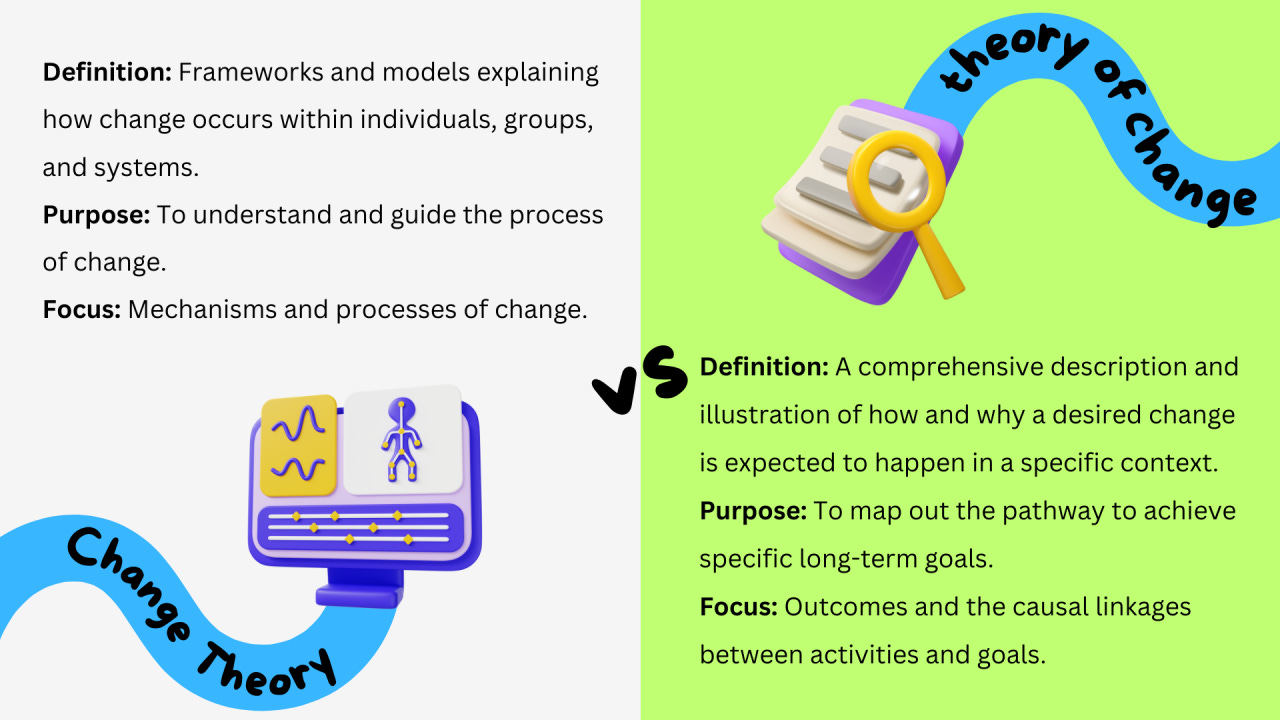Understanding the Distinction Between Theory of Change and Change Theory
A Theory of Change should be grounded in an underlying change theory- one is intervention-specific, while the other is explanatory
This post is part of my series for professionals working in the social change space to understand the transformative potential of Theory of Change beyond an industry box-ticking exercise to appease funders and other stakeholders. If you’re a grassroots changemaker looking to understand how you can harness the power of a theory of change in your own social change efforts or personal projects, join one of our FREE Craft Your Impact Blueprint workshops held via the School of Social Impact.
When it comes to creating a ToC, the concepts of "Theory of Change" and "Change Theory" are often used interchangeably, leading to confusion and, at times, ineffective strategies. As professionals dedicated to creating meaningful change, it's crucial to distinguish between these two frameworks to ensure our interventions are both effective and contextually grounded.
Theory of Change: A Roadmap for Intervention
At its core, a Theory of Change (ToC) is a comprehensive map guiding us from our current state to our desired outcomes. It’s both a product and a process, serving as a strategic guide and a continuous reflective tool throughout an intervention.
Think of Theory of Change as navigating a journey. We start by identifying our destination – the change we want to achieve, then we assess our current position and the various contextual factors that could influence our path towards that destination. This includes understanding the terrain, potential obstacles, available resources, and the roles of different stakeholders. By mapping out these elements, we identify multiple pathways and choose the most viable one based on our specific context, expertise, and constraints.
A well-crafted Theory of Change allows us to articulate why we believe certain actions will lead to desired outcomes and provides a basis for developing detailed strategies. It helps us remain adaptable, continuously reassessing and adjusting our approach as new information and conditions emerge.
Change Theory: Theoretical Foundations of Change
In contrast, Change Theory refers to broader theoretical frameworks that explain how change occurs within specific contexts. These theories are often grounded in empirical research and span various disciplines, including psychology, sociology, and environmental science.
For instance, Change Theories in psychology might focus on incremental behaviour change, as popularised by models like those found in "Atomic Habits." These theories explain how habits form and can be altered through cues, routines, and rewards. On the other hand, sociological Change Theories, such as the Transformative Model of Social Activity (TMSA), explore the dynamic interplay between individual agency and social structures, offering insights into how societal change unfolds.
Change Theories provide us with the underlying principles and mechanisms of change, informing our Theory of Change by explaining why we believe certain strategies will be effective. They are not predictive but explanatory and descriptive, helping us understand and interpret the patterns we observe in our interventions.
Practical Application: Integrating Theory of Change and Change Theory
To illustrate, let’s consider a campaign aimed at reducing youth vaping. A Theory of Change for this intervention would map out the steps needed to achieve this goal, considering factors like the triggers for vaping, alternative behaviours, and the rewards associated with quitting. This strategy would be more effective if informed by Change Theories related to habit formation and behaviour change, which explain the psychological mechanisms at play.
Similarly, in a project aimed at enhancing local biodiversity through regenerative gardening, our Theory of Change would involve selecting suitable plants, understanding local ecosystems, and planning maintenance schedules. This plan would be informed by Change Theories from ecology, which describe how plant life cycles and ecosystems function and interact.
As professionals in the social impact space, it’s imperative to integrate these frameworks, ensuring our interventions are both theoretically sound and contextually relevant. By recognising the distinction and interplay between Theory of Change and Change Theory, we can enhance our strategic planning, improve our outcomes, and ultimately drive more impactful and meaningful change in our communities and organisations.


